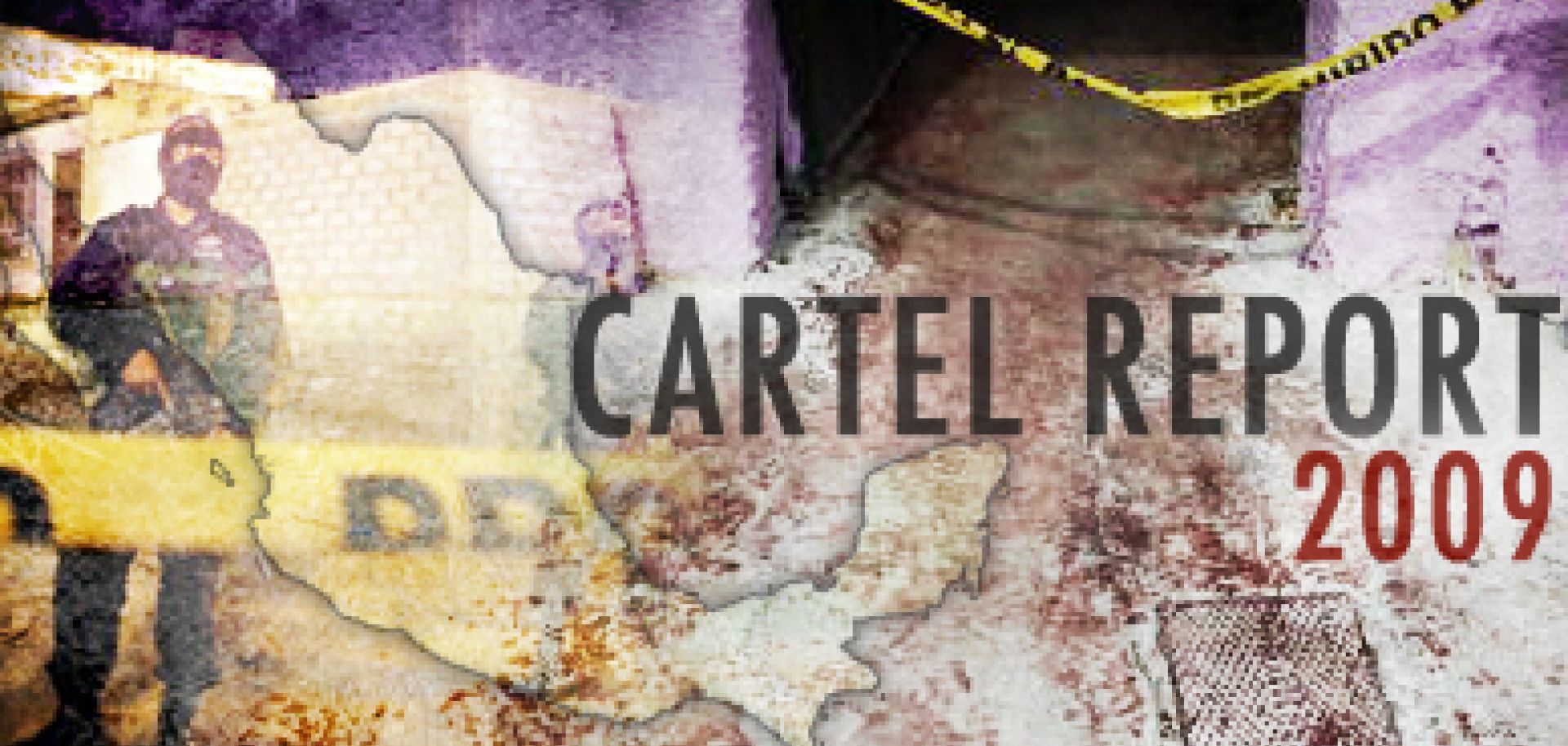ASSESSMENTS
Mexican Drug Cartels: Two Wars and a Look Southward
Dec 17, 2009 | 14:17 GMT

Summary
In this report on Mexico’s drug cartels, we assess the most significant developments of 2009 and provide an updated description of the country’s powerful drug-trafficking organizations, as well as a forecast for 2010. This annual report is a product of the coverage we maintain on a weekly basis through our Mexico Security Memo as well as the other analyses we produce throughout the year. Two cartel wars in Mexico combined to produce record levels of violence in 2009. The first war is the struggle between the government of Mexico and the drug cartels. In a parallel war, cartels compete with one another for control of lucrative supply routes. Shortly after his inauguration in 2006, President Felipe Calderon launched a major campaign targeting the cartels, which he viewed as a major threat to Mexico's security and stability. Over the past three years, the government has weakened and fragmented some of the major cartels (namely the Gulf and Sinaloa cartels), but in the progress has upset the balance of cartel power. The result has been an increase in violence as formerly allied cartels have been pitted against each other in battles of attrition, as they fight for control of lucrative smuggling routes. Click here to download a PDF of this report The turbulence within individual Mexican cartels that was seen in 2008 was absent in 2009, although the changes created by that turbulence have persisted, along with the divisions in previous alliances caused by Calderon's 2008 campaign against the cartels. With these continued divisions came a continuation of Calderon's strategy, and a continuation of high levels of violence. With the success experienced in 2008, Calderon continued to pursue his strategy of deploying Mexican military personnel and federal police against the cartels. Calderon has vowed to pursue this strategy into 2010 despite mounting public criticism and issues with rising violence. Violence in 2009 has again reached unprecedented highs. Chihuahua state has accounted for nearly half of the organized crime-related deaths in Mexico so far in 2009, despite having the highest concentration of security forces in the country. And Juarez continues to be the epicenter of the violence in Chihuahua state as the Sinaloa cartel and the Juarez cartel struggle for control of the Juarez plaza. Another large source of violence has been the emergence of La Familia on the national and international drug-trafficking scene, as the organization looks to expand its territory beyond its home of Michoacan. The geography controlled by the various cartels has remained relatively static within Mexico, with the exception of La Familia's becoming the dominant force in Michoacan. One noticeable trend identified in 2008 was the expansion of Mexican cartel presence in Central America. The year 2009 also revealed an expansion of cartel operations south of Mexico, with a significant increase in seizures and law enforcement operations, targeting the Sinaloa cartel and Los Zetas in particular. The increase in seizures, along with less obvious indicators, such as the Sinaloa cartel placing a single person in charge of operations in Central America, shows the region is growing in importance to these organizations.
Subscribe Now
SubscribeAlready have an account?
